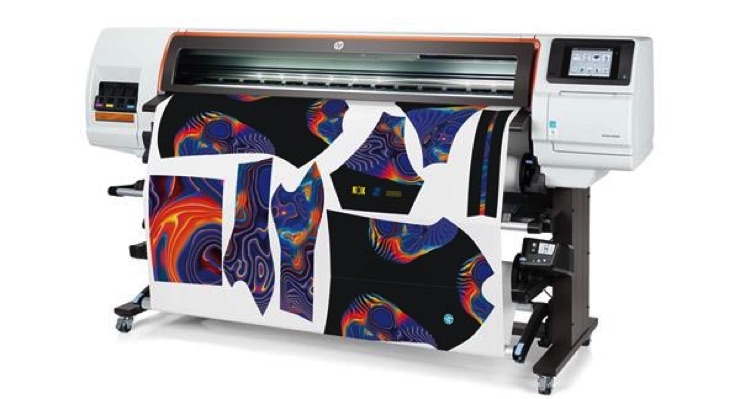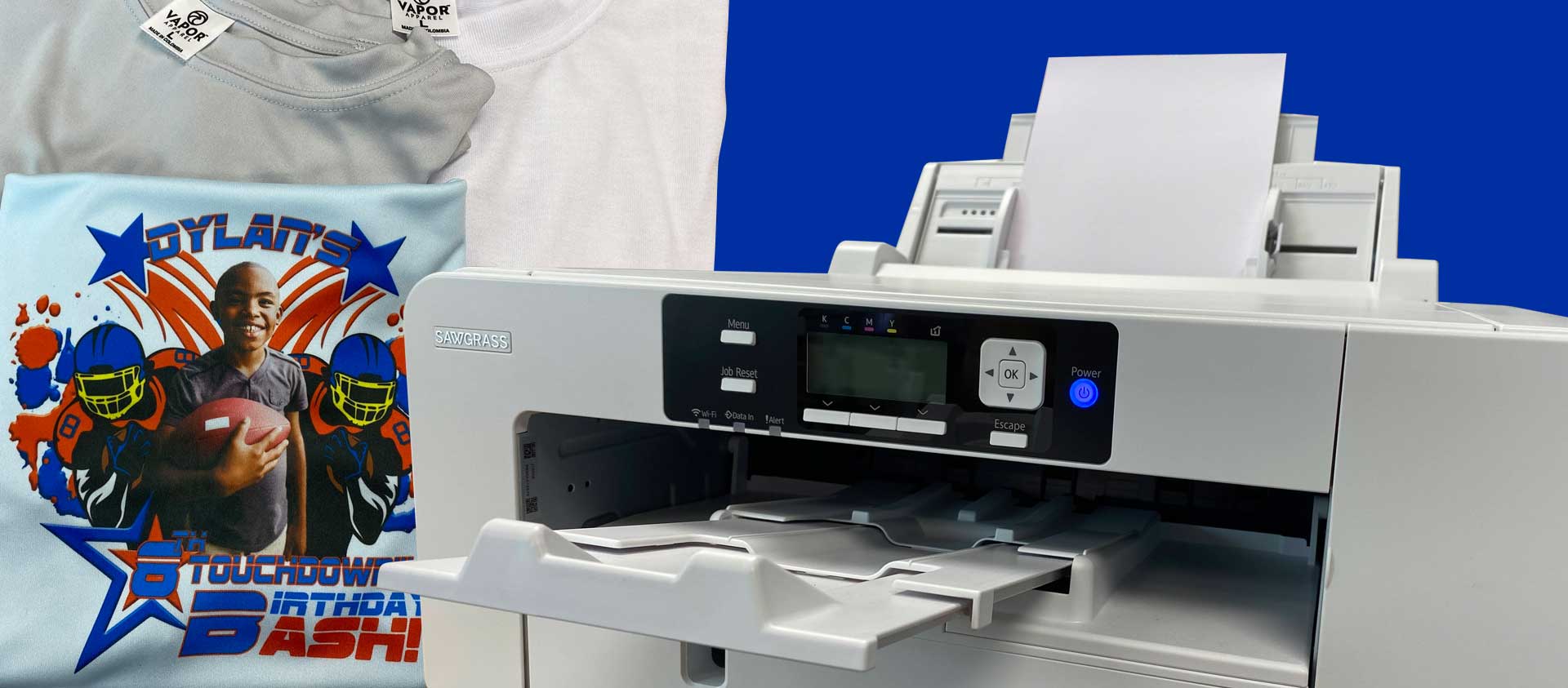Just How Screen Printing Changes the Branded Clothing Sector
Just How Screen Printing Changes the Branded Clothing Sector
Blog Article
A Comprehensive Guide to the Various Types of Cloth Printing Strategies
Each approach, from the meticulous craftsmanship of block printing to the fast performance of screen printing, offers one-of-a-kind objectives and offers distinctive advantages. Digital printing's flexibility and environmental consciousness stand in plain comparison to the speedy modification of warm transfer printing.
Block Printing
Block Printing, among the oldest approaches of fabric decor, has a rich history that goes back to old worlds. Coming from China around 220 A.D., this method later infected India and eventually Europe. The process includes sculpting detailed styles right into wooden blocks, which are after that dipped in color and pressed onto textile to produce patterns. This technique is noteworthy for its ability to create highly detailed and repetitive layouts.
The accuracy and workmanship involved in block printing make it a labor-intensive procedure, however it also enables a high degree of customization. Craftsmens can produce unique patterns by combining various blocks or varying the application of dye. This adaptability has added to the enduring appeal of block printing in both standard and contemporary fabric style.
Block printing is particularly valued for its visual qualities, consisting of the minor variations in pattern and shade that result from the hand-printing procedure. These imperfections offer a special character per piece, distinguishing it from mass-produced textiles. Despite advances in contemporary printing technologies, obstruct printing remains a valued technique, commemorated for its historic importance and imaginative value.
Display Printing
Screen printing, another famous textile decor method, has actually transformed the sector with its effectiveness and versatility. This technique involves producing a pattern, called a display, and using it to apply layers of ink on the printing surface. Each color in the layout needs a separate screen, which permits elaborate and vivid multi-colored prints.

Among the vital benefits of display printing is its versatility to various kinds of materials, including cotton, polyester, and blends. This method is specifically suitable for large-volume orders as a result of its cost-effectiveness and speed. The resilience of the prints is an additional significant advantage, as the ink bonds well with the material, ensuring lasting styles that withstand multiple laundries.
The process begins with preparing the screens by finishing them with a light-sensitive emulsion. Once dried, the design is transferred onto the emulsion-coated screen utilizing a UV light. The revealed locations harden while the unexposed components are gotten rid of, creating a pattern. Ink is after that pushed via the pattern onto the textile utilizing a squeegee.
Screen printing is widely used in the fashion industry, promotional products, and custom-made clothing. Its capacity for high-grade, in-depth prints secures its status as a cornerstone strategy in textile printing.
Digital Printing
Digital printing has actually quickly emerged as an advanced strategy in the textile sector, leveraging sophisticated technology to generate high-resolution styles straight onto material. Unlike traditional approaches, digital printing uses inkjet printers to deposit pigment or dye-based inks onto fabrics, enabling detailed and dynamic patterns with a remarkable level of detail and color accuracy.
One of the key advantages of electronic printing is its flexibility. This approach permits on-demand printing, which significantly reduces waste and reduces supply costs. Furthermore, it sustains short runs and custom-made layouts, making it optimal for custom projects and limited-edition collections. The removal of screens and other configuration needs even more boosts efficiency, decreasing manufacturing time and labor prices.
Furthermore, electronic printing is eco pleasant. Branded clothing. It utilizes water-based inks and needs much less water and energy compared to conventional techniques, lining up with sustainable methods. The accuracy of electronic printing likewise permits the usage of a bigger range of textiles, consisting of cotton, silk, polyester, and blends, ensuring flexibility across various applications
Heat Transfer Printing
How does warmth transfer printing transform textile style? Warmth transfer printing includes making use of warm and stress to transfer a layout from a specially created paper onto fabric.
Among the primary advantages of warmth transfer printing is its capability to generate premium, detailed pictures promptly and effectively. It is specifically well-suited for little manufacturing runs and customized orders, making it a preferred choice for individualized garments and promotional products. In addition, this technique is flexible, suiting various sorts of materials consisting of cotton, polyester, and blends.
Moreover, warm transfer printing is reasonably cost-effective compared to other techniques, as it calls for marginal configuration and lower initial financial investment - DTF printing. This price, combined with its ability for generating dynamic, durable prints, emphasizes why not find out more its essential duty in contemporary fabric style

Dye Sublimation Printing
Dye sublimation printing, an innovative fabric printing technique, supplies unequaled vibrancy and longevity for styles on various synthetic materials. This technique involves converting solid color right into a gas without passing via a fluid state, enabling the dye to permeate the fabric seamlessly. The process starts with printing the style onto an unique transfer paper utilizing sublimation inks. The printed transfer paper is then positioned on the textile, and both undergo high warmth and stress utilizing a click to find out more heat press. The warmth creates the dye to sublimate and bond with the fabric fibers, developing an irreversible, high-resolution print that withstands fading and breaking.
One of the vital advantages of dye sublimation printing is its capacity to produce continuous-tone prints with lively shades and elaborate information. Unlike other printing techniques, the color becomes part of the material instead than resting on top of it, resulting in a soft and breathable surface.
Final Thought
In recap, cloth printing Click This Link methods each deal unique benefits customized to numerous needs and applications. Block printing is admired for its artisanal top quality, while display printing is advantageous for high-volume production. Digital printing supplies convenience and environmental benefits, whereas heat transfer printing is suitable for rapid customization. Color sublimation printing creates dazzling, durable designs on synthetic materials. The diversity and advancement within these techniques highlight the vibrant and progressing nature of the towel printing sector.
Each approach, from the thorough workmanship of block printing to the fast effectiveness of screen printing, serves unique purposes and supplies distinctive advantages. Digital printing's versatility and environmental consciousness stand in raw comparison to the quick customization of heat transfer printing. Regardless of breakthroughs in modern-day printing innovations, block printing remains a valued method, celebrated for its historic value and creative value.
Dye sublimation printing, a sophisticated textile printing method, provides unmatched vibrancy and long life for designs on numerous synthetic fabrics. Digital printing supplies flexibility and environmental benefits, whereas warm transfer printing is ideal for fast modification.
Report this page